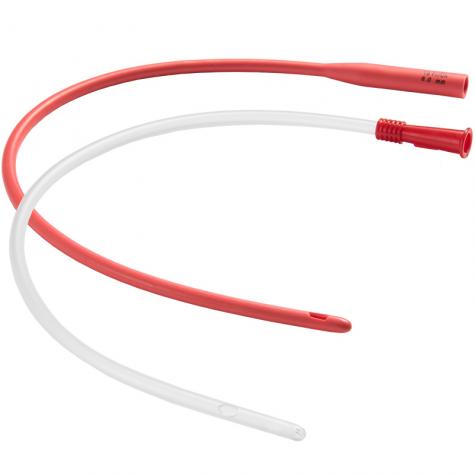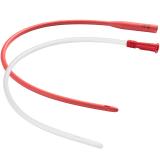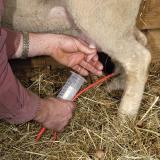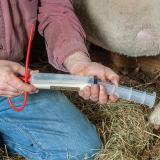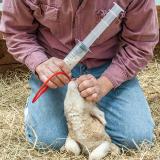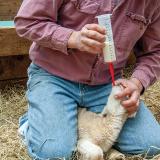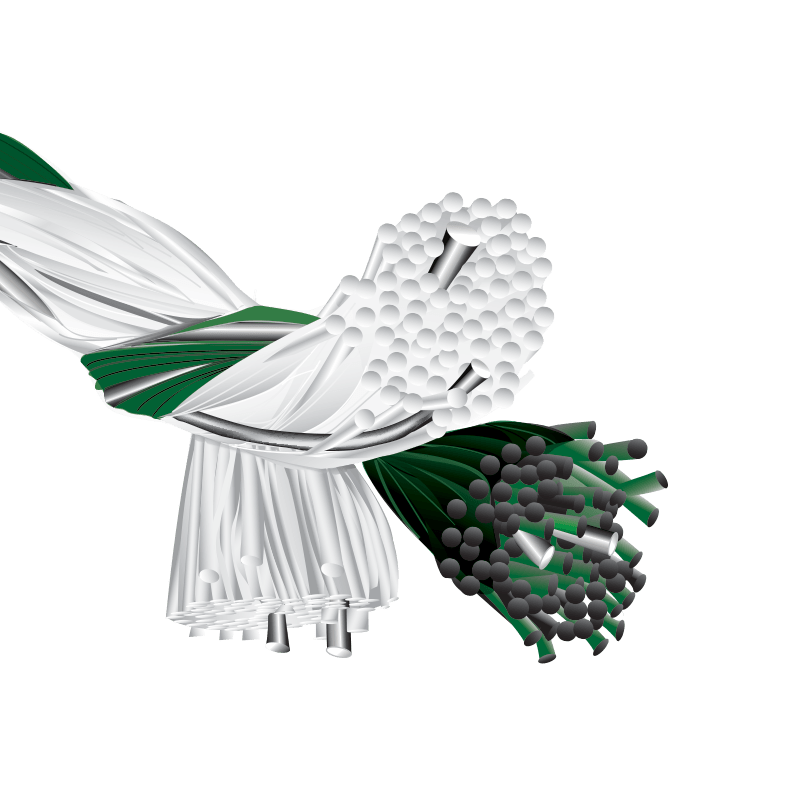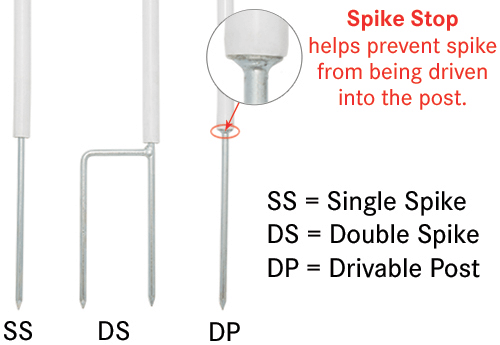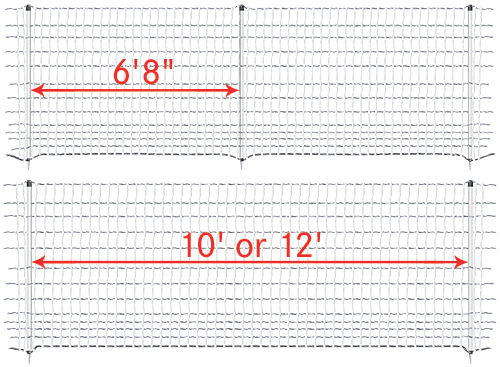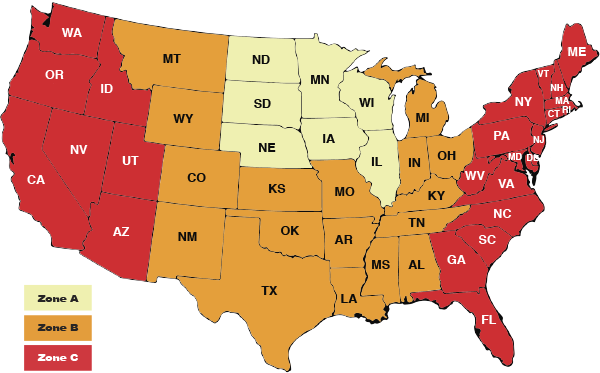Stomach Tubes
Product Details
A safe, easy method for feeding weak lambs and goat kids.
To tube feed a lamb, use with a catheter tip syringe.
Instructions/Diagrams:
Common Uses
Specs
- Red Rubber Tube
- Flexible rubber. 6.0mm. 16" long.
- Clear Plastic Tube
- Easier to insert because they are less flexible than rubber. However, when it’s cold, plastic tubes are stiff and may cause injury during insertion (a greater concern with goat kids). 6.0mm diameter; 16" long.
How To Use
- Be very careful to gently extend the animal's chin so that its neck is straight before carefully inserting the tube. If the light is good you can visually observe the bulge of the tube sliding down the neck. In bad light, we use our fingers to feel its presence. If you can neither feel nor see the tube, it may well be in the animal's hard hollow trachea and thus the lungs. Be cautious of this. If the tube enters the lungs instead of the stomach, pneumonia and starvation could result.
- Pull the tube out gently and restart it. The chance of wrongly inserting the tube is not as great as it may appear. Simply be sure that the tube is inserted in a straight line from the animal's mouth to its stomach.
- Continue to pass the tube into the stomach. The usual distance is 11 or 12 inches. You cannot pass the tube too far, but it is very important to pass the tube far enough. If it is in the correct position you will hear a gurgling sound through the empty syringe.
- Should the solution not run, the cause could be an airlock or possibly with older animals, the teeth could be clamped on the upper part of the tube. If an airlock occurs, slide tube in and out about 1/2 inch.
- Do not ram the milk into the stomach. We usually do not actually insert the plunger unless using thick colostrum which will not flow on its own. If the plunger is used, gently push the milk into the animals stomach.
Shepherd’s Choice® Management Tip
On many farms during lambing time, one tube gets used over and over again without being cleaned or disinfected. Lambs that are being treated for scours or pneumonia should not be tube fed with a common tube. If you tube feed a sick lamb with a tube, wash it, disinfect it and let it dry before using it again. Keep plenty of tubes on hand.Precautions
Clear plastic tubes are a little easier to insert because they’re less flexible. However, when it’s cold (Midwest USA cold), plastic tubes are stiff and may cause injury during insertion (a greater concern with goat kids). Red rubber tubes are the most flexible.
Producers should NOT tube lambs that cannot hold their heads upright. In most cases these are hypothermic lambs. They need glucose (IP) and warming first. Once the animal has been revived and can hold its head up, then you can use the various stomach tube devices to deliver nourishment.
Read all warnings and cautions on label. For livestock use only.
Listed below are recommended optional components or related items. Your particular situation may require alternative recommendations. Please call and talk to our consultants if there are any questions at 800-282-6631.
-
Drenching and Vaccinating
140cc Syringe (4.6 oz) Catheter Tip
Item #553000 -Most commonly used for stomach tubing weak lambs and kids. Can be used as a drencher as well.
$9.00 -
Drenching and Vaccinating
60cc Syringe (2 oz) Catheter Tip
Item #553100 -Most commonly used for stomach tubing weak lambs and kids. Can be used as a drencher as well.
$2.00
Write a Review
You must be logged in to leave a review. Please sign in.
Ramona R from Washington
I used this on a premie lamb and like the old style red tube better. The surface is a little stickier and didn’t slide down as easy. I used some coconut oil to help. The holes in the tip are smaller and they plugged up. Maybe the clear tube would be better for me.
Frank V from Iowa
Both the red and clear tubes are superior to the tubes I have brought at farm stores. My favorite is the clear tube. How do you raise lambs without a syringe and tube setup?
Stephanie L from California
OMG buy the red ones! I am a vet and these are the best tubes. Super soft to help avoid trauma. I love them!
Lydia S from Delaware
Hands down the best tube for tubing lambs. Bonus that it’s cheap too! Smooth enough to minimize irritation, but firm enough that it won’t kink.
Jim M from Kentucky
These flimsy tubes are not what I wanted. It used to be I would order a 60 ml syringe and get a stiffer tube to use when stomach tubing small lambs. I already have the syringes so just needed some more tubes.
Premier sent these flimsy catheter tubes which are impossible to use unless you stuff them down the lambs throat with your finger practically choking them.
I think they are not a good item for the purpose and if you continue to sell them have a better description of what they are. The previous ones we purchased from you worked good.


